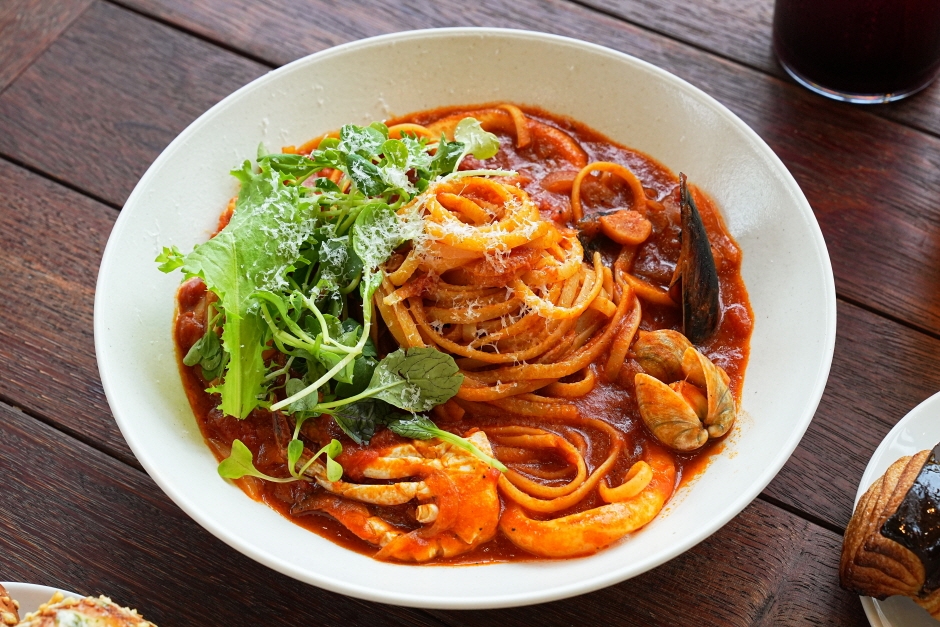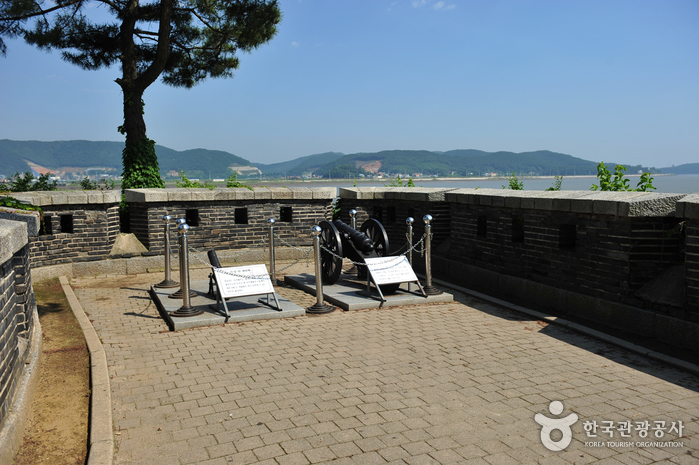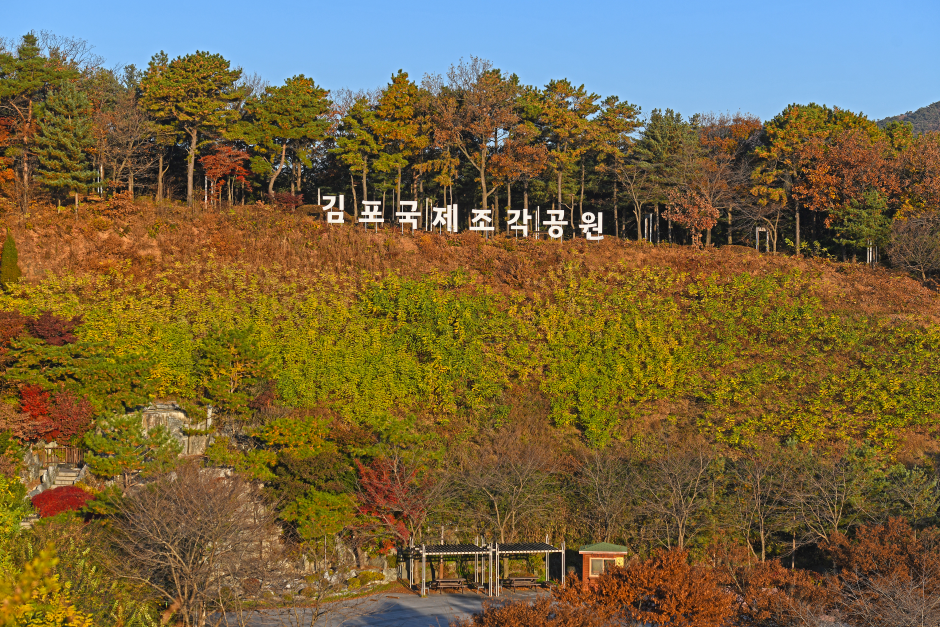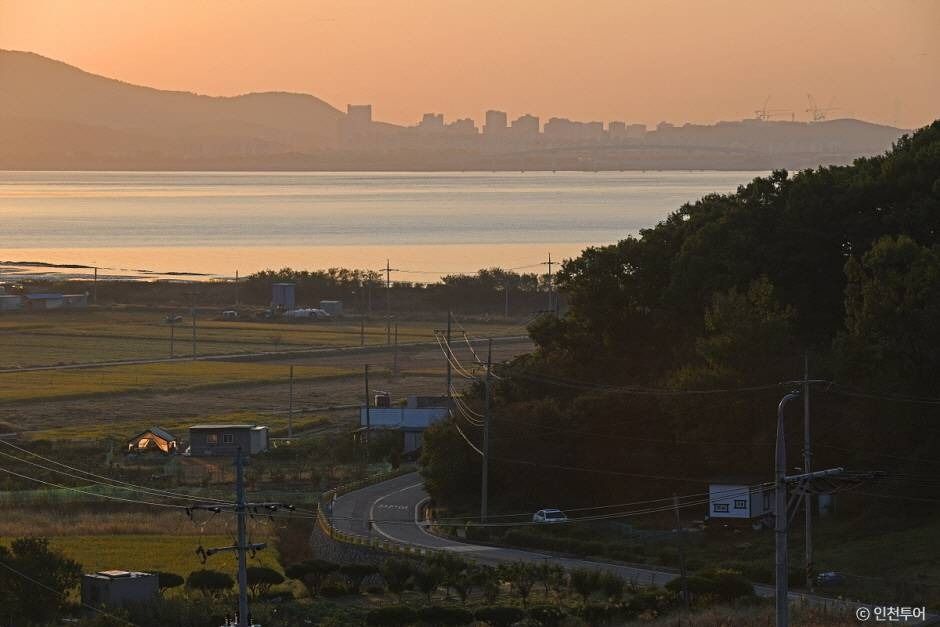Gimpo Munsusanseong Fortress (김포 문수산성)
10.4Km 2022-12-20
Ponae-ri, Gimpo-si, Gyeonggi-do
+82-31-980-2485
Munsusanseong Fortress was built on Munsusan Mountain in 1694, during the 20th year of the reign of King Sukjong, the 19th king of the Joseon dynasty. The fortress as designed to defend Gwanghwado Island from marine invasion. At the time, the fortress had north, west, and south gates, but they were destroyed in a fire during the Byeong-in Yangyo (1866). The north gate was restoryed in 1995 and the south gate in 2002. The fortress walls span 6 kilometers in length, 4 kilometers of which remain unrestored. Surrounded by beautiful scenery, the top of the fortress commands a spectacular view spanning from North Korea to the Hangang River inlet, and from Samgaksan Mountain to the sea off Incheon in the distance. It is often referred to as the Geumgangsan Mountain of Gimpo as it boasts superb scenery throughout all four seasons. The mountain is home to Munsusa Temple, established during the reign of Silla King Jinseong.
Seongmodo Shrubby Sea-blite Habitat (석모도 칠면초 군락지)
10.6Km 2024-02-20
29-3 Maeeum-ri, Samsan-myeon, Ganghwa-gun, Incheon
Seongmodo Shrubby Sea-blite Habitat is a habitat where a colony of shrubby sea-blite flourishes on tidal flats. Situated on the route to Minmeoru Beach, accessible via the Seongmodaegyo Bridge, this area is known for the robust growth of seepweed, which forms colonies in tidal flats or areas with high salinity. From September to mid-October, the landscape transforms with vibrant reddish-pink flowers, often referred to as the "fall foliage of the sea."
Café de Chelsea (카페 드 첼시)
10.7Km 2024-02-21
107-20 Gimpo-daero 2435beon-gil, Tongjin-eup, Gimpo-si, Gyeonggi-do
0507-1368-7780
Café de Chelsea is a brunch and bakery café inspired by the Chelsea Physic Garden, a secret garden in England. Its impressive indoor space and outdoor garden are captivating, featuring vibrant seasonal interior designs that change regularly, making it a popular spot for photography. They offer a range of beverages including espresso, milk tea latte, Chelsea spänner (Chelsea einspänner), and various bakery items. The tea room on the first floor offers specialty teas and a tea vin chaud.
Sugi Beach (수기해변)
10.7Km 2022-07-28
291-48, Sido-ro 86beon-gil, Ongjin-gun, Incheon
+82-32-899-2253
Located on Sido Island in Incheon, Sugi Beach is easily accessible from Seoul. Sido Island is situated between Yeongjongdo Island and Ganghwado Island. The beach is not as crowded as other famous beaches, and is ideal for families or campers.
Sugi Beach was the filming location for the famous drama series "Full House (2004)." Sido Island connects Sindo Island and Modo Island, making it easy to tour the three islands by foot or car.
Oepo-ri Kkotgejip (외포리꽃게집)
11.6Km 2024-03-20
1206 Jungang-ro, Naega-myeon, Ganghwa-gun, Incheon
Oepo-ri Kkotgejip is a restaurant dedicated to traditional blue crab delicacies, including kkotge tang (spicy blue crab stew), kkotge jjim (steamed blue crab), and ganjang gejang (soy sauce marinated crab). Positioned near Oepo-ri Quay, en route to Seongmodo Island, the restaurant provides a delectable experience of blue crab dishes complemented by a stunning sea view. Visitors can also take pleasure in the scenic Korean coastal landscape, explore the salted seafood market, and observe the fishing boats in the vicinity.
Line Hotel / 라인호텔
11.7Km 2025-03-31
2337 , Gimpo-daero, Gimpo-si, Gyeonggi-do
+82-31-988-2234~6
The Line Hotel in Tongjin-eup, Gimpo-si, Gyeonggi-do, offers snug and clean accomodation with a variety of rooms types. Rooms are equipped with bathroom, Wif-Fi, AC/heater and fridge. There is a 24-hour information desk and luggage storage, laundry, and fax/copy services are offered. Gimpo Sculpture Park is 10 minutes away by car, and Deokpojin Fort and Hamsang Park are 20 minutes away. Guests can walk or drive along the beach, or drive across the Ganghwa Bridge to Ganghwa-do.
[Ganghwa Nadeul-gil Course 2] Homeland Fortification Trail ([강화 나들길 제2코스] 호국돈대길)
11.7Km 2021-08-11
24, Cheonghadong-gil, Ganghwa-gun, Incheon
+82-32-934-1906
The Ganghwa Nadeul-gil Trails are a collection of walking paths along the coast of Ganghwa Island that connect the watchtowers and and walls of Ganghwasanseong Fortress, as well as royal tombs and other historically significant sites from the Goryeo dynasty that dot the island.
[Ganghwa Nadeul-gil Course 2] Homeland Fortification Trail
Course 2 stretches over a 17 kilometer area between Gapgotdon Watchtower and Chojijin Fort. This trail showcases the history of the island and the changes that happened before and after the opening of the port. The course follows a coastal road that is particularly beautiful in spring and fall.
Gapgotdon Watchtower (갑곶돈대)
11.7Km 2021-01-18
18, Haeandong-ro 1366beon-gil, Ganghwa-gun, Incheon
+82-32-930-7077
Gapgotdon Watchtower was built to protect the Ganghwa Straits from invasion when the Goryeo Kingdom moved their capital to Ganghwado Island. The fortified area served as a highly strategic location for the Goryeo Kingdom, and had endured multiple invasions by the Mongolian troops between 1232 and 1270.
The watchtower was fortified in the Joseon dynasty by King Sukjong in 1679 and had once fallen during the French campaign against Korea in 1866. In 1977, the site was restored to its original form. The cannons exhibited at the current site were made during the Joseon dynasty to attack outside invaders from sea.
Gimpo International Sculpture Park (김포국제조각공원)
11.8Km 2025-03-22
38, Yonggang-ro 13beon-gil, Gimpo-si, Gyeonggi-do
+82-31-984-5167
Gimpo Sculpture Park is situated in a large forest and is decorated with 30 sculptures: 14 by international artists and 16 by Korean artists. Since the site is located near the DMZ, the only divided country in the world, each sculpture expresses the overarching theme of unification. A favorite spot for weekend picnicking families and couples on dates, the park is expected to be included in a large tourist complex in the near future along with nearby Reports Park and the youth training center.
Sinsimodo Islands (신시모도 (신도ㆍ시도ㆍ모도))
12.2Km 2025-06-30
Bukdo-myeon, Ongjin-gun, Incheon
Sinsimodo Islands is comprised of the three islands of Sindo, Sido, and Modo. Referred to as brother islands, visitors can explore all three islands in one day on bicycle thanks to bridges that connect the islands together. Attractions on the islands include Gubongsan Mountain, Haedanghwa Dulle-gil Trail, Sugihaebyeon Beach, Baemikkumi Sculpture Park, and more. Gubongsan Mountain, located on Sindo Island, features a forest trail that is easy to walk on, making it easy to enjoy the azaleas and cherry blossoms that bloom each spring. Baemikkumi Sculpture Park, featuring artworks of Lee Ilho before the background of the sea, is especially popular among couples.


![[Ganghwa Nadeul-gil Course 2] Homeland Fortification Trail ([강화 나들길 제2코스] 호국돈대길)](http://tong.visitkorea.or.kr/cms/resource/05/1895205_image2_1.jpg)



 English
English
 한국어
한국어 日本語
日本語 中文(简体)
中文(简体) Deutsch
Deutsch Français
Français Español
Español Русский
Русский